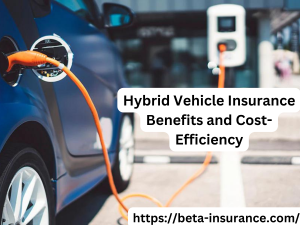Low mileage discount options in auto insurance
Introduction
In the realm of auto insurance(Low mileage discount options in auto insurance), one often-overlooked avenue for potential savings is the low mileage discount. As additional drivers embrace options in contrast to day to day driving or wind up working from a distance, the conventional models of vehicle use are developing. This shift presents a chance for policyholders to investigate limits customized to their diminished mileage. In this complete aide, we will dive into the universe of low mileage rebate choices in accident protection, investigating what they involve, how they can be gotten, and the possible effect on in general inclusion.
I. Seeing Low Mileage Limits
Characterizing Low Mileage Limits
Low mileage limits are a classification of collision protection limits intended for drivers who cover less miles than the typical policyholder. These limits recognize that diminished mileage frequently relates with a diminished gamble of mishaps, provoking back up plans to reward such dependable way of behaving with cost reserve funds.
Qualifying as a Low Mileage Driver
Qualifying as a low mileage driver ordinarily includes giving a gauge of the quantity of miles you drive yearly. Different protection suppliers might have shifting models for what comprises low mileage, and it’s significant to comprehend these limits to decide qualification for limits.
Factors Impacting Low Mileage Limits
A few variables can impact the accessibility and degree of low mileage limits. These may incorporate the insurance supplier’s contracts, the condition of home, the motivation behind the vehicle, and the picked technique for mileage confirmation. It’s fundamental for drivers to consider these elements while investigating markdown choices.
II. Calculating Your Annual Mileage
Before looking into low-mileage discount options, it is essential to accurately calculate your annual mileage. This should be possible by checking on vehicle odometer readings, support records, or using mileage following apparatuses accessible through some protection suppliers.

Figuring out Normal Mileage Benchmarks
Protection suppliers frequently lay out normal mileage benchmarks to separate among low and standard mileage drivers. These standards could be different, but common ones are 7,500, 10,000, or 12,000 miles per year. Discounts for low mileage may be available to drivers who fall short of these requirements.
Confirming Mileage to Safety net providers
Protection suppliers might require confirmation of announced mileage to apply low mileage limits. This check cycle can include submitting odometer readings during strategy restoration, utilizing mileage GPS beacons, or giving support records as proof.
III. Pay-Per-Mile Insurance
Pay-Per-Mile Insurance, also known as usage-based insurance, is a type of low-mileage discount program in which premiums are paid according to the number of miles driven. Telematics gadgets or versatile applications track the genuine mileage, offering a customized and possibly savvy choice for low mileage drivers.
Yearly Mileage Limits
Some insurance suppliers offer clear yearly mileage limits, where drivers who stay under a predetermined mileage edge get a rate decrease in their payments. The measures for these limits might shift between back up plans.
Incidental Use Limits
Incidental use limits take special care of drivers who utilize their vehicles inconsistently. This classification might incorporate people who basically depend on open transportation, telecommute, or own an optional vehicle for incidental use.
IV. Cost Savings:
Benefits of Low mileage discount options in auto insurance
The most obvious benefit of low mileage discounts for policyholders is the potential for cost savings. By exhibiting capable driving propensities and lower openness to possible dangers, drivers can appreciate decreased charges, adding to in general monetary wellbeing.
Natural Effect
Decreased mileage benefits drivers monetarily as well as has a positive natural effect. Empowering and remunerating low mileage driving lines up with more extensive manageability objectives by lessening fossil fuel byproducts related with vehicle use.
Advancing Safe Driving Propensities
Low mileage limits can act as a motivator for drivers to take on more secure driving propensities. Knowing that their expenses are straightforwardly affected by their mileage urges drivers with focus on security and comply to traffic guidelines.
V. Factors Affecting Low Mileage Markdown Qualification
Driving Way of behaving
Protection suppliers might think about driving way of behaving while deciding low mileage rebate qualification. Safe driving practices, adherence as far as possible, and the shortfall of criminal traffic offenses add to a positive driving record.
Patterns of Vehicle Use
The eligibility for a low-mileage discount can be affected by the purpose for which a vehicle is used. Drivers who principally utilize their vehicles for driving brief distances or infrequent tasks might have a higher probability of fitting the bill for these limits.
Area and Driving Examples
The area of home and driving examples can impact qualification for low mileage limits. Metropolitan inhabitants with admittance to public transportation or people who work remotely might be bound to qualify.

VI. Exploring the Cases Interaction with Low Mileage Limits
Straightforwardness and Exactness
Keeping up with straightforwardness and exactness in revealing mileage is critical while exploring the cases cycle with low mileage limits. Any errors among announced and genuine mileage could influence the legitimacy of limits and claims.
Regular Mileage Updates
In order to ensure that the reported mileage remains accurate, some insurance companies may request regular mileage updates. It’s fundamental for policyholders to agree with these solicitations to keep up with the trustworthiness of their inclusion and limits.
Claims Dealing with for Low Mileage Drivers
Low mileage drivers might encounter a smoothed out claims process, particularly in the event that their diminished mileage connects with a lower probability of mishaps. Protection suppliers might focus on and facilitate claims for low mileage policyholders.
VII. Difficulties and Contemplations for Low Mileage Limits
Confirmation Difficulties
Confirming detailed mileage can be a test, particularly while depending on self-revealed gauges. In order to address this issue and guarantee accuracy, insurance companies may implement measures like mileage tracking devices.
Likely Makes progress with in Driving Propensities
Life conditions, like an adjustment of work or home, can prompt changes in driving propensities. Policyholders ought to know about likely changes and illuminate their protection supplier to stay away from errors in detailed mileage.
Impact on Traditional Coverage
Although policyholders can benefit financially from low mileage discounts, they should carefully consider how these discounts might affect other aspects of their coverage. For instance, decreases in mileage might impact inclusion cutoff points or choices for emergency aides.
VIII. Future Patterns in Low Mileage Limits
Progressions in Telematics Innovation
The eventual fate of low mileage limits might see headways in telematics innovation. Enhancements in information assortment and examination through telematics gadgets or applications could prompt more precise and customized rebate choices.
Combination with Maintainable Practices
Protection suppliers may progressively adjust low mileage limits with more extensive maintainability drives. Promoting and expanding these discounts could become centered on the environmental benefits of driving less.
Modified Markdown Projects
The advancement of protection industry practices might bring about more altered rebate programs. Low-mileage discounts could be tailored to specific driving habits, patterns, and risk profiles for each individual.
IX. Conclusion
Recap of the Significance of Low Mileage Limits
Low mileage limits in collision protection offer a pathway for drivers to accomplish massive expense reserve funds while adding to ecological supportability. By adjusting monetary motivators to mindful driving propensities, safety net providers and policyholders can cooperate to make a more secure and more maintainable driving scene.
Consolation for Investigation and Straightforwardness
As drivers investigate low mileage rebate choices, straightforwardness in detailing and a reasonable comprehension of qualification rules are vital. Participating in open correspondence with protection suppliers and embracing the advantages of decreased mileage can make ready for a commonly valuable connection among policyholders and safety net providers.














Post Comment